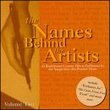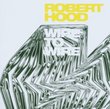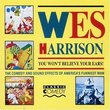| All Artists: Arnold Schoenberg, Luciano Berio, Elliott Carter, Gyorgy Kurtag, Sir Harrison Birtwistle, Gerard Grisey, Iannis Xenakis, Hugues Dufourt, Brian Ferneyhough, Pierre Boulez, Ward Swingle, Regis Pasquier, Phyllis Bryn-Julson, Adrienne Csengery, Istvan Matuz, The Swingle Singers Title: Pierre Boulez ~ Schoenberg ˇ Berio ˇ Carter ˇ Kurtág ˇ Xenakis Members Wishing: 1 Total Copies: 0 Label: Elektra / Wea Release Date: 6/6/1995 Genres: Special Interest, Pop, Classical Styles: Vocal Pop, Opera & Classical Vocal, Chamber Music, Forms & Genres, Concertos, Theatrical, Incidental & Program Music, Historical Periods, Modern, 20th, & 21st Century, Instruments, Reeds & Winds, Symphonies Number of Discs: 5 SwapaCD Credits: 5 UPC: 745099849627 |
Search - Arnold Schoenberg, Luciano Berio, Elliott Carter :: Pierre Boulez ~ Schoenberg ˇ Berio ˇ Carter ˇ Kurtág ˇ Xenakis
 | Arnold Schoenberg, Luciano Berio, Elliott Carter Pierre Boulez ~ Schoenberg ˇ Berio ˇ Carter ˇ Kurtág ˇ Xenakis Genres: Special Interest, Pop, Classical
Collecting five CDs for about the price of three, this set of Boulez recordings is without parallel among the conductor's new-music releases. Imagine getting Boulez's celebrated single CD of Luciano Berio's Sinfonia and Ei... more » |
Larger Image |
CD DetailsSynopsis
Amazon.com essential recording Collecting five CDs for about the price of three, this set of Boulez recordings is without parallel among the conductor's new-music releases. Imagine getting Boulez's celebrated single CD of Luciano Berio's Sinfonia and Eindrücke and his equally impressive single CD of Arnold Schoenberg's Pelleas und Melisande and Variations for Orchestra, bundled with four pivotal Elliott Carter works, Sir Harrison Birtwistle's electrifying ...AGM..., Gérard Grisey's Modulations, Iannis Xenakis's Jalons, Hugues Dufourt's Antiphysis, and Brian Ferneyhough's Funerailles, and you have an idea how far this set stretches. There are the uproarious moments of Berio's clattery free-for-all approach easily juxtaposed against Schoenberg's more measured Variations, as it illuminates the crossroads of serialism and standard classical methodologies. The most astonishing moments come in the Kurtag songs, themselves echoing Pierrot Lunaire, and the Birtwistle work, which crosses extended vocal patterns with exclamatory orchestral interruptions to great effect. For anyone interested in Boulez's conductorly contributions to the postserial world, this is a surefire collection that opens the window on the great one's magic with difficult, thorny music. It also serves as a fascinating primer on the expansion of new music's techniques, especially when you consider the Elliott Carter works, all of them post-1975 and each uniquely expanding the American canon immeasurably, or the Grisey, Dufourt, and Ferneyhough works, as each of these composers came of age in the post-World War II era. --Andrew Bartlett Similar CDs
|
CD ReviewsBest Single Collection of Modern Music Karl Henzy | 12/21/1998 (5 out of 5 stars) "Listen--this set is actually a great buy, though it may seem like too much of an investment. But for your 45 bucks you get five discs (only $9 per disc), and it has to be one of the best collections of modern music ever, played by Boulez' spectacular group, Ensemble InterContemporain. Look at what you get: Schoenberg's Variations for Orchestra (his most beautiful serialist composition); Berio's Sinfonia (a contemporary classic); Carter's Oboe Concerto, Mirror on Which to Dwell, and Penthode (for Carter fans, the disc is a must, since it's currently the only place you can get the concerto and Penthode, both essential Carter); Kurtag's Troussova (searing), Birtwistle's AGM (powerful, mysterious), Ferneyhough's Funerailles (electric), and Xenakis's Jalons (one of his best). For one purchase, you'll find yourself right in the thick of modern music." A great purchase for new fans modern music morrisgn | Richmond, VA United States | 04/02/2001 (5 out of 5 stars) "I just started getting into modern music a few years ago and this set was one of the best purchases I have made so far. It introduced me to several of my now favorite composers, as well as starting me off with a top-notch recording of their work. The $10 per CD price is very good for contemporary music (which usually runs closer to $20 for a CD). The music covers several composers in much greater depth than your average sampler, and every CD in the set would make a great individual purchase. In addition to the content, the recording quality and performance on each track is uniformly flawless. If you are new to avant-garde music, think of this set as an introductory greatest hits compilation that will remain a treasured purchase no matter how big your collection gets. If you're an experienced contemporary music collector you probably bought this CD as soon as you saw the names on it and the price." Powerful showcase of the last century scarecrow | Chicago, Illinois United States | 04/10/2000 (5 out of 5 stars) "I concur this is the only place to find these masterworks, not all but the Carter pieces,Penthode I know of no other recording. This is a marvelously opaque like work, somewhat dry, Carter's penchant utilization of a rhythmic cell passed around the rather dry sounding ensemble. Especially exciting here is Antiphysis by Hughes Dufourt,a French composer philosopher who is quite outspoken on carrying the torch of European post serial modernity. This work is a veiled flute concerto,largely in two seamless movements where the soloist is simply part of the forever trmoili textures the first half of the work, blizzards of flute tones are conveyed,large doses of fluttertonguing,fast filigreed moments. At times the chamber ensemble seems to engulf powerfully the soloist knocking it out of commission and at times Dufourt with incredible surges of timbre. This is a surface piece of incredible power, long stridently sustained chords, like the internal tension of a suspension bridge, You are waiting for something to snap, it doesn't. The percussion moments in this work as well create great waves and impeccably controlled thunderous roars to stop on a dime. You would never know this piece is actually a miniature flute concerto. The flute lines tossed into all registers with colourful again fluttertonguing, wisps and long scale-like lines. Dufourt is not a prolific composer.So this is a rare treat. Boulez's residencies with The Chicago Symphony over the past ten years has produced a few profound gems from the Post Romantic world,one not entirely his, and Schoenberg's tone poem 'Pelleus und Melisande' in one of them.This is an early post Wagnerian score double the legth of his equally successful 'Transfigured Night'.Unless you know the motives Herr Schoenberg had utilized from the original Maeterlinck play,the work engulfs one as one colossol tone poem/commentary on the wanderings and below the surface anxieties of the union of this pair of lovers,who never quite get it.Schoenberg as Debussy had visions of the darkest moments of the Maeterlinck with rounded timbral orchestrations. Boulez holds a taut reins here and controls this arduously long work with great vision. It's dark colours and thick textures are all balanced properly. You never sense the works length,it moves,lumbers into its moments quite well and when it hunkers down finally on an old fashion minor chord it is arresting.Chicago plays this music as no other,music written for them, with there overdosed,overexposed repertoire of post Romantics from the Solti Years. They put this expereince to its test in the 'Orchestral Variations' also of Schoenberg, a much later work from his brief year spent in Berlin in 1930, a time when he had full confidence in his visions for the dodecaphonic language. Boulez also enjoys this work with a full spectrum of shapes to lend direction from chamber like moments of some of the variations to discreet solos and duets emanating from the orchestral forces to full bodied statements. This is quite an achievement for this newly found language. But you can see Schoenberg moving into these untenable,new regions. For the isolated sense of expressionist colour seems to have been forsakened here,abandoned for a larger homogeneous one. If you know his 'Five Pieces for Orchestra',you sense an entire universe of difference.As if Wagner now has returned to haunt him. The Ensemble Intercontemporain bring a real sense of immediacy to the Ferneyhough, 'Funerailles',a score scaled down to 2 Violins, 2 Violas, 2 Cellos, Doublebass and Harp.It's in the same gestural habitation of the Dufourt, large textural plains,regions of tremoli,punctuated freely.You may not recognize Ferneyhough here this is an early work with large gestures,not the finely attenuated approach to structuring and shaping timbres as you might find for instance in his 'Etudes Trancendental' or the string quartets. Without the Harp here to punctuate the one-dimensional string timbre produced here this work would indeed have been tedious and bland. The right amount of penetrating timbre is here to give the work the thornyness it deserves.If you are a Xenakis fan then his Jalons (steps) here is for you. This is music about the density and timbre transformations. Almost like standing in front of an industrial contraption waiting for it to turn off or break down or heat up.Blast furnace like timbres and strident whistles are here."
|

 Track Listings (13) - Disc #1
Track Listings (13) - Disc #1


